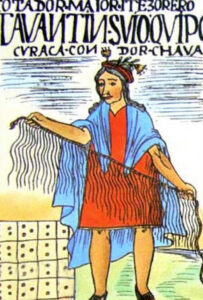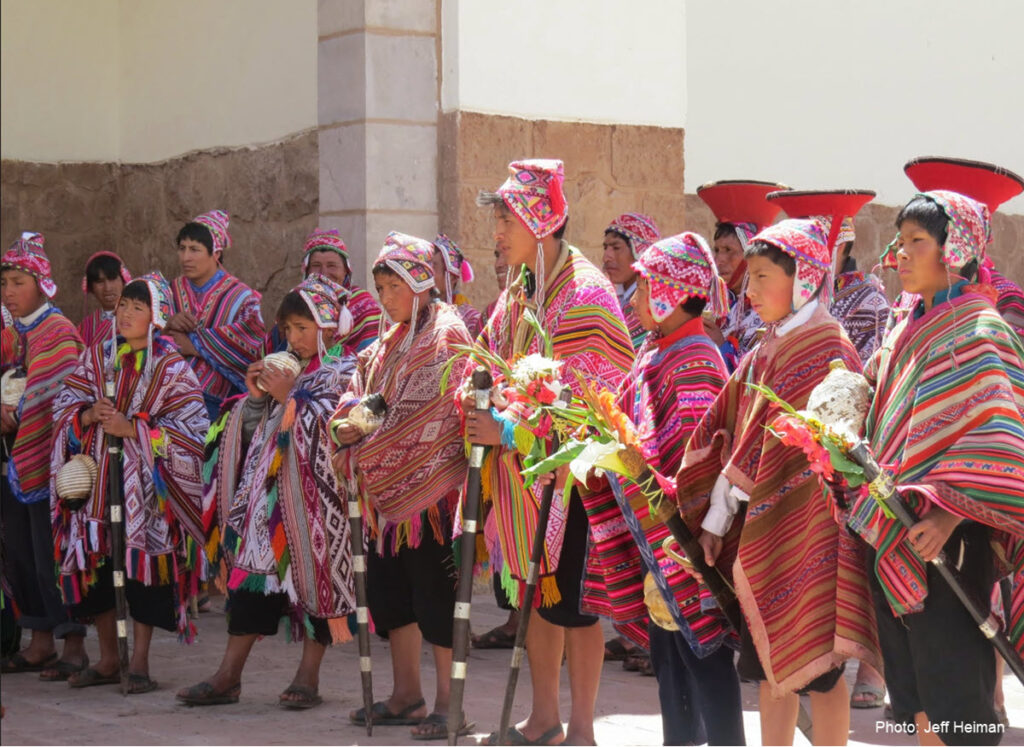By Paarth Mathur ✐
Peruvian Times Contributing Writer ☄
The linguistic landscape of Peru is a story of resilience. Since the Spanish conquest in 1532, efforts to erase indigenous languages like Quechua were relentless.
Yet, despite centuries of suppression—through conquest, religious conversion, and colonial legislation—Quechua endured. Its survival speaks to the strength of Peru’s oral traditions and cultural identity.
Domination and Resilience: The Linguistic Landscape of Quechua in Peru
Francisco Pizarro’s arrival marked the beginning of profound cultural and linguistic shifts. Spanish quickly became the language of governance, education, and commerce—spread not just through force, but through deliberate policies that marginalized native tongues. Catholic missionaries used Spanish to convert indigenous populations, further embedding colonial authority in daily life.
Despite these pressures, Quechua—language of the Inca—survived. It thrived through oral tradition and the determination of indigenous communities who resisted total linguistic assimilation.
The Wari and Inca Empires: Foundations of Quechua
Centuries before the Incas, the Wari Empire (600–1000 AD) laid the groundwork for Quechua’s expansion. Through centralized administration and a far-reaching road system, the Wari spread early forms of Quechua across the Andes, using it as a tool for communication and integration among diverse regions. Even after the empire’s decline, Quechua persisted in many areas, setting the stage for the Incas.
The Inca Empire (1400s–1500s) did not simply adopt Quechua—it transformed it. The Incas broadened its vocabulary for administration, religion, and commerce. They formalized its grammar and promoted it as a common language to unify their vast, multicultural territory.

The Quipu was a system of knotted cords used by the Incas to record and convey administrative data. Source: Latin American Studies
Yet the Incas did not eliminate local dialects. Quechua became a lingua franca, coexisting with and incorporating features of other languages spoken across the Andes. This process created a rich, layered linguistic environment that reflected the diversity of the empire.
A key part of the Inca administrative system was the quipu, a sophisticated system of knotted cords used to store and transmit data. Though not a writing system in the conventional sense, quipus recorded numerical and bureaucratic information such as taxes and census data. Some researchers believe the knots and colors also encoded symbolic meanings, though this remains unproven. Paired with the oral transmission of Quechua, the quipu enabled effective imperial communication over vast distances.

A curaca, or community chief, displaying his quipu. Source: Latin American Studies
Colonial Suppression and Linguistic Adaptation
The Spanish colonial period brought sweeping changes to Peru’s linguistic order. Spanish became the official language of governance, education, and commerce. It was positioned as a symbol of modernity and progress, especially within colonial schools and churches.
Spanish became a prerequisite for social and political advancement. Legal decrees—including King Charles III’s 1770 law banning native languages—sought to eradicate indigenous tongues altogether. Yet, Quechua continued to survive and adapt.
In the Andean highlands, Spanish absorbed Quechua’s sounds and syntax, giving rise to Andean Spanish, a distinct regional variety. Speakers dropped final consonants—saying má’ instead of más, tre’ instead of tres. This wasn’t just linguistic borrowing—it was cultural resistance. Indigenous speakers reinterpreted Spanish through their own worldview.
Amazonian Spanish and Linguistic Diversity
In the Amazon, where colonial presence was less dominant, Amazonian Spanish emerged through everyday exchanges with numerous indigenous languages. This dialect is more flexible and fluid, often softening or omitting consonants like “r” and “d”—pared becomes Pa’é, mirroring native pronunciation patterns.
These regional adaptations highlight how indigenous communities didn’t simply adopt Spanish—they transformed it.
Quechua Words in Spanish: Symbols of Endurance
Some Quechua words were seamlessly adopted into everyday Spanish, especially in reference to the natural world and traditional Andean life. Terms like puma and llama carry deep cultural weight.
In Inca cosmology, the puma symbolized wisdom and balance. Today, the word still evokes those ancient meanings. The llama, long a source of transport, wool, and food, also represents endurance and adaptation. Their continued symbolic presence in language and folklore speaks to the lasting influence of Quechua.
The Future of Quechua: Revitalization and Resilience
Despite centuries of suppression, Quechua survives—not just as a language, but as a living expression of cultural identity. Efforts to preserve it are ongoing, from bilingual education programs to digital learning tools and legal protections like Peru’s 2017 Language Rights Law.
These movements are not about nostalgia—they are about ensuring a vibrant cultural future. Quechua’s revival is part of a broader commitment to indigenous rights, cultural memory, and linguistic diversity.
A Living Heritage
Quechua’s survival is a testament to the resilience of the Andean people. It reminds us that languages, like the cultures that speak them, are dynamic and enduring. Peru’s future lies not in choosing one language over another, but in celebrating coexistence—recognizing that each language carries a unique worldview, a legacy of thought, and a voice worth preserving.
When a language disappears, so does a way of understanding the world. By honoring both Quechua and Spanish, Peru embraces the full depth of its heritage—and offers a powerful model of cultural resilience for the world.
Paarth Mathur is the author of Voices: Linguistic and Cultural Dynamics of the Refugee Population in the United States






